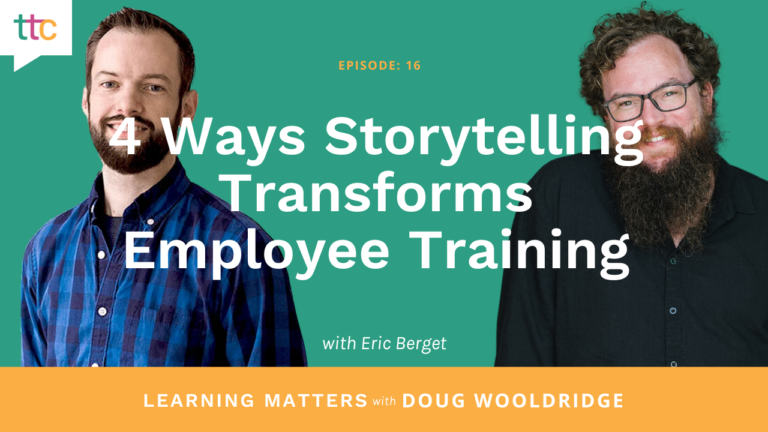Savvy instructional designers are usually savvy storytellers. They know that powerful stories and powerful training events are adventures, and that we all seek adventure. They also know that stories can be adapted to match any type of learning. Hemingway’s famous six-word tale, “For sale: Baby shoes. Never worn,” proves that a great story can be short and War and Peace proves that a great story can be long. Even a team huddle can integrate all the elements of a good story.
Storytelling involves a storyteller and a reader, but the reader can also be a participant. Some of the best storybooks are interactive; everyone loves a good pop-up book! Here are some of the ways storytelling can enhance the efforts of any instructional designer.
Start with a title that functions as a teaser.
Which learning event would interest you more: Basics of the New XL System or How the XL System Will Increase Your Productivity? An engaging title compels the reader to turn the page for a satisfying experience. A learning event with an engaging title also creates anticipation and promises personal benefit.
Create a plot that is worthy of attention.
A fascinating plot absorbs the reader in a way that compels him or her to go wherever the story leads. This is true even if the reader knows the ending. We never tire of The Night Before Christmas, after all. Effective instructional designers, like effective storytellers, use structure, setting, tone, and style to encourage learners to move forward, even when they are discouraged because the material is complex or new skills require dedicated practice to achieve.
Build thoughtfully toward a happy ending.
Readers keep reading because they expect the protagonist to be transformed in some way. A skillful instructional design can also transform, taking a participant from novice to master. To accomplish this, instructional designers use the same techniques that great storytellers have used for years: parables, comparison and contrast, repetition, dramatic changes in voice, references to other content, metaphors, similes, illustrations, and even mnemonics. When a good book or successful training session has been completed, either can be viewed as a cohesive package with a logical ending.
Don’t forget the cliffhanger.
Never underestimate the value of a good cliffhanger. From Scheherazade and her one thousand stories to the television show, Dallas, we’ve learned the power of creating an appetite for learning more!
Whether around the campfire, in a darkened movie theater, or being tucked in bed to the Tale of Peter Rabbit, we have learned to love stories. Smart instructional designers know to use these beloved experiences to create a desire and passion for learning. After all, the best stories, like the best training, lead you to keep thinking about them long after the last word is spoken or read. That is what true learning is all about.







